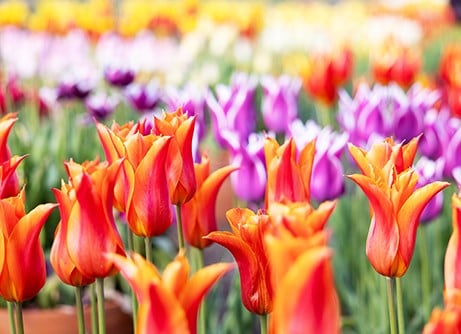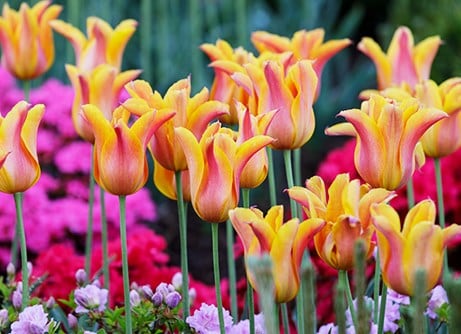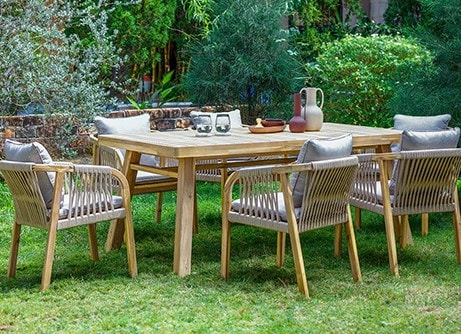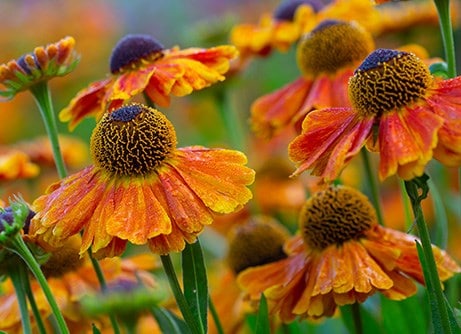-
Find the right plant
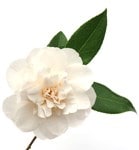
-
Choosing Plants
Right plant
right place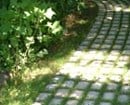
Find the right plant for that bit of the garden that nothing grows in…
-
Designing with plants

For ready-made borders, good combinations and other design ideas
-
What's your style?
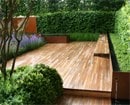
Mediterranean, jungle, cottage, seaside, japanese, take your pick…
Our Plants, and how we grow them.

I suppose you can’t win over 20 gold medals at the Chelsea Flower show if you don’t know how to grow a decent looking plant. As far as I’m concerned, success is a mixture of art and science. The art is to start with good material, and then put it in the right compost.
Over the years we have developed relationships with all the best plant propagators in the UK and elsewhere. That way we can be sure the plant has natural vigour, and is true to type.
We aim to grow plants that are better than you will find in a garden centre. This is not because we are working for top garden designers (who have very exacting standards) or building show gardens. Its because people buy plants from us unseen, and on trust. This means that when they unpack our plants they have to be better than they ever expected

Our potting machine

Liner and finished 2 litre plant
Special plants require special compost and we have our own proprietary mix.
Good compost is always greater than the sum of its parts! But ours is made up as follows:
- Substrate: This is the bulky part, and is usually peat based. Different grades of peat are blended together to give the basic structure of the compost. The Air Filled Porosity (AFP) is an indication of how “open” a compost is. This is usually given as a percentage: the higher the number the more air in a mix. We aim for an open compost with a good structure to enhance long term drainage and aeration
- Fertiliser: A base dressing is added to the mix (Mg/litre N=90 P=45 K=150) to help rooting start and a controlled release fertiliser (Osmocote Exact) is added, which works for a 12-14 month period. This is designed to release nutrients in response to temperature and works with the plant as it grows to make sure that there is always enough food.
- pH Correction: Various Additives are used to correct the pH to the requirements of the crop. This has a big impact on how much nutrient can be taken up by the plant.
- Drainage: Some mixes require an extra additive to improve drainage and aeration. This has the added bonus of adding more structure to the compost. Grit used to be commonly used, but chipped bark is now the norm.
We are trying to use less peat, and are conducting several peat-free trials, but as almost everyone agrees, peat is very hard to beat.
We are trialling 3 composts...
- General: This is a peat blend of 34% Medium Grade and 66% Coarse Grade to give an AFP of 15%. Base dressing and a controlled release fertiliser (3.5kg/m³ Osmocote Exact) are included. Magnesian limestone is added to regulate the pH to 5.5. This is the mix that the majority of our plants grow in.
- Coarse: A blend of 25% Medium Grade and 75% Special Coarse Grade to give an AFP of 20%, otherwise the same as above. This is used for large plants and anything requiring really good drainage.
- Peat Free: equal parts coir (shredded coconut husk), bark and Toresia to give an AFP of approx. 18%. Toresia is a trial product made from waste wood (all from FSC sources) and is not available to growers yet (don’t bother searching on Google, I have tried and nothing comes up). We are one of the first growers to trial this worldwide. A base dressing and 4.5kg/m³ of Osmocote are included as well as 100g of Ferrous Sulphate. This is the best blend we have seen so far with most of the same structural properties of a traditional peat mix.

Peat free mix

Regular peat mix
These are early trials, so monitoring is carried out regularly to check the moisture, nutrient levels and pH to see what is happening over the life cycle of a crop. We are really assessing the general feel of the different mixes to see if it works for our plants. They are very far from being available to other growers yet.
So far the results have been mixed. Our general and coarse mixes are tried and tested. When used in the right way they give predictable results time after time. The peat free mix started off well and we were seeing roots to the edge of the pot and strong top growth on all the plants within a couple of weeks. As time has moved on we started to see yellowing of the leaves in the peat free when compared to the general mix. This could be because of several factors to do with excess moisture, fertiliser levels or the pH balance. We have sent samples of the compost off to the lab to see what the problem is, how we correct it in the plants, and crucially, what changes we need to make for the next time.

The less healthy looking plant on the left was grown in peat free compost and the plant on the right was grown in peat compost
Throughout its’ life on the nursery, the plant will be moved around and get its own watering and liquid feed regime. We feed different plants in different ways. Some have a very strict weekly regime, some monthly, and some just as required. Generally speaking we begin fertilising once the plants start showing signs of movement with a high nitrogen feed and switch to a more balanced feed with plenty of potassium closer to flowering. As the plants slow down towards the end of the summer we feed with a higher ratio of phosphorous. This stops the plant getting too soft and helps to develop strong roots over the winter.
Plants just cannot survive without water. We take great care to make sure that everything gets the right amount. We check our plants every day and adjust our irrigation settings to keep the plants healthy. The key is to make sure that the plants always have some moisture without being saturated as sometimes too much is worse than not enough. As a rule we only ever water the equivalent of 10% of the pot volume in any irrigation cycle. We also recycle our rainwater and irrigation now to reduce waste. All the run off is channelled into a small lake and then filtered and pumped back through the sprinkler system.
We are doing our best to use resources wisely. We recycle all our pots, and are moving away from oil as a heat source. We are installing a new wood-burning boiler that will heat water to feed round pipes in our packing shed and poly tunnels. It is a bit like installing central heating in your greenhouse, only on a much bigger scale!
I hope that by the time you get one of my plants it is still as perky as when it left the nursery (and hasn’t had a rough time getting to you). I know you will give it a good home and I hope you enjoy each other’s company for many years to come.
Nursery Manager

